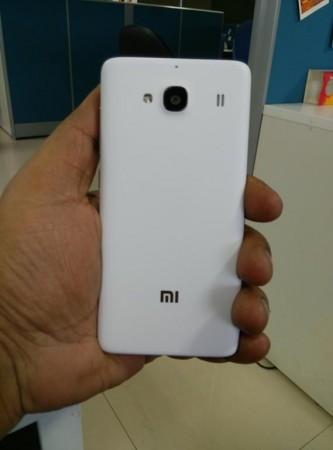Earlier in the day, Xiaomi unveiled the third-generation Redmi series entry-level smartphone in India.
The new Redmi 3 comes with a huge upgrade over its 2015 model Redmi 2, in both exterior looks and internal hardware.
To provide a better comparison between the two Redmi series siblings, we have briefly described the key feature differences between the two.
Design and Display:
Like we said at start, the new Redmi 3 is completely different in terms of look and hardware.
The new phone comes encased in the metal cover on the rear. It not only provides a premium feel but also sturdy structure, so device can withstand an accidental fall.
Probably in its bid to provide more grip, the company has incorporated a dotted diamond pattern on the cover surface.
Xiaomi has also changed the camera position in the Redmi 3 from the centre to the top-left corner, with the LED flash on the extreme left corner.
In the 2015 model, the camera module was placed at the top-centre, with a single LED flash to the left. It featured a plastic cover, but was sturdy enough to survive the fall.
As far as display is concerned, Redmi 3 sports a bigger 5.0-inch HD display with 294 ppi (pixels per inch).
On the other hand, Redmi 2 features a 4.7-inch HD screen, but due to its smaller display footprint, the pixel count is higher (312 ppi), thus producing sharper images on the screen. Even the Redmi 2 Prime model has the same display features.
Processor, RAM and Storage:
Redmi 3 comes with 64-bit Qualcomm Snapdragon 616 Octa-core CPU backed by 2GB RAM and 16GB inbuilt memory.
Redmi 2 houses 64-bit class 1.2GHz Snapdragon 410 SoC (System on Chip) with 1GB RAM and 8GB inbuilt memory.
The Prime model features a bigger 16GB inbuilt storage capacity, like the Redmi 3, but it can only be expanded up to 32GB, whereas the latter comes with option to upgrade up to 128GB.

Mobile Operating System:
The 2015 model comes shipped with the Android 4.4 KitKat with MIUI 6.0 OS, but recently Xiaomi upgraded to the latest MIUI 7.0. Even the new Redmi 3 runs on the latest MIUI 7.0 out of the box.
Also read: Xiaomi Redmi 2 vs Redmi 1S: What's New in Next-Gen Mid-Range Smartphone
Camera:
Redmi 2 has an 8-megapixel camera with full video-recording ability on the rear and a 2-megapixel snapper on the front.
On the other hand, Redmi 3's camera gets bumped to 13MP. It features five physical lens, f/2.0 aperture, PDAF (Phase Detection Auto Focus), HDR, full-HD video recording and 0.1-second phase focusing speed.
Also read: Xioami Redmi 2 Review: Worthy Budget Successor to Redmi 1s
And on the front, it houses a 5.0-megapixel snapper with f/2.2 aperture, full-HD video recording ability, face-recognition feature and 36 intelligent self-portrait selfie styles.
Battery:
Redmi 2 features a 2,200-mAh cell, whereas the Redmi 3 houses a massive 4,100-mAh battery which is said to offer 80% more talktime than its predecessor.
Read more: Xiaomi Redmi 3 price and release details (Will it be launched in India?)
Key features of Xiaomi Redmi 3 and Redmi 2:
| Models | Xiaomi Redmi 3 | Xiaomi Redmi 2 |
| Display | 5.0-inch HD (1280x720p) screen
|
4.7-inch HD (1280x720p) screen
|
| OS | Android OS MIUI v7.0 | Android OS with MIUI v7.0 |
| Processor | 64-bit class Qualcomm Snapdragon 616 Octa-core (1.5Ghz ARM Cortex A53 quad-core + 1.2GHz ARM Cortex A53 quad-core) CPU | 64-bit class 1.2GHz Qualcomm Snapdragon 410 quad-core CPU |
| GPU | Adreno 405 | Adreno 306 |
| RAM | 2GB |
|
| Storage capacity | 16 GB, expandable up to 128GB |
|
| Camera |
|
|
| Battery | 4100 mAh | 2200 mAh |
| Network | 4G-LTE | 4G-LTE |
| Add-ons | Full-metal body, Dual-SIM (micro+ nano/microSD card) slots, Bluetooth v4.1, micro-USB 2.0, GPS/GLONASS, A-GPS, | Dual-SIM slots, Bluetooth v4.0, Wi-Fi (802.11 b/g/n), GPS+ GLONASS, A-GPS, |
| Dimensions | 139.3 x 69.9 x 8.5 mm | 134.0 x 67.2 x 9.4 mm |
| Weight | 144 g | 133 g |















